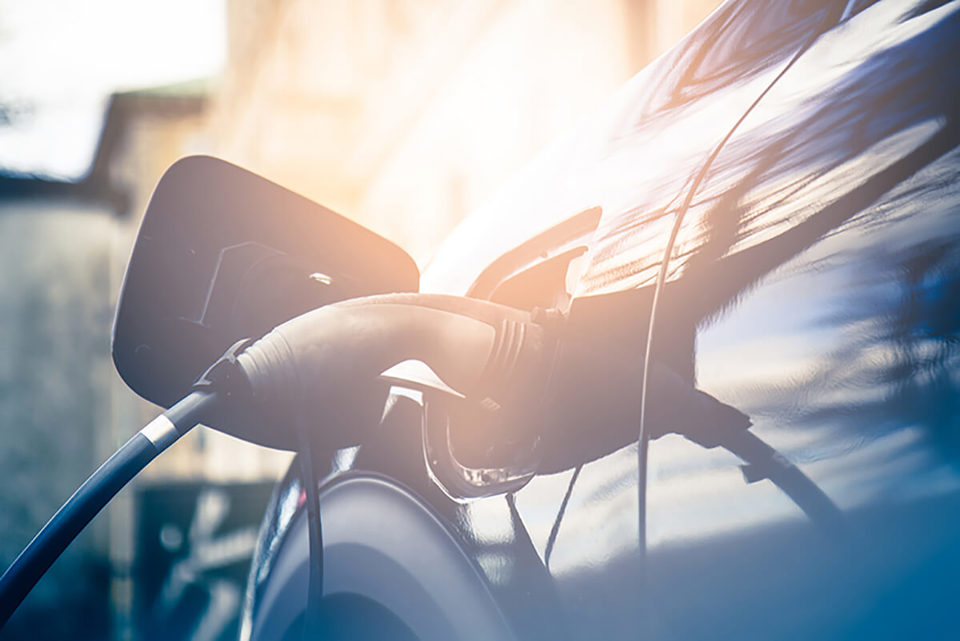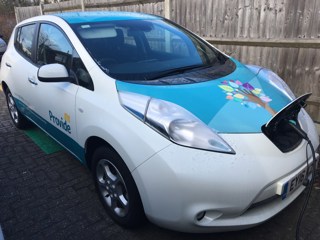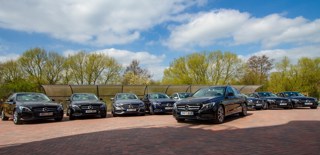National Grid wants to collaborate with third-party suppliers to create a new motorway network of next generation electric vehicle (EV) charging points, enabling vehicles to be charged in less than 12 minutes.
The electricity and gas utility company is inviting companies to plug a network of 50 350kw charging stations directly into its high-voltage transmission system, rather than local grids.
These super-rapid chargepoints are aimed at those making long journeys up and down motorways such as company car drivers.
A spokesman for National Grid said: “If you overlay the motorway network over the transmission network, there is a synergy.
“The electricity transmission network runs close to the motorway network and is likely to be most efficient connection at many sites.”
The super-rapid charging points would be compatible with a future generation of EVs that have large capacity batteries which take more time to charge using current methods.
A spokesman for National Grid told Fleet News the project is showing that “infrastructure doesn’t need to be a barrier ”.
He said: “Presently, a supplier could come to us and ask to connect their rapid charger to the transmission network, and we would provide this connection.
“However, we don’t believe this piecemeal approach is the best way forward. We believe a structured and co-ordinated rollout of rapid chargers is the most efficient way of ensuring the network is fit for the future growth of EVs.”
National Grid said these 50 strategic sites would mean the vast majority of drivers (90%) would always be within 50 miles of a rapid charger. There would be 30-50 chargers each with a capacity of 350kw at each station, which would help reduce waiting times.
Chargemaster has confirmed that it is one of several companies pitching to collaborate with National Grid.
National Grid believes the project will cost between £500 million and £1 billion in grid infrastructure, adding that future-proofing for EV growth needs a “do it once, do it right” approach.
Discussions are ongoing with potential charging and motorway service station partners and the timescale is dependent on who is going to pay for it.
The spokesman said: “We’re keen to highlight to Government and potential customers what is achievable and that we’re happy to discuss options.”
David Martell, Chargemaster chief executive, said that while it was good to see National Grid taking a strategic view of what is required to deploy more charging infrastructure across the UK, the technology it is suggesting is not compatible with the majority of plug-in vehicles available in the market right now.
Martell said: “It is likely that only high-end models will be engineered with higher voltage systems to enable 350kW charging.
“We don’t see many manufacturers looking beyond 150kW charging at the moment, which is something Chargemaster will provide.”
Martell said it was also important to recognise that while some drivers want to be able to charge up in a few minutes, the reality is that only a small proportion of drivers will actually need super-rapid charging.
He said: “Unlike petrol or diesel, the majority of charging happens – and will continue to happen – at home.”
National Grid acknowledges that the motorway network is just one of five important locations where charging will be required in the future.
The others being home, local petrol station equivalents, destination charging (work, supermarkets, gyms) and at fleet depots.
The National Grid spokesman said: “In the medium term we are looking at where we can reinforce our network and work collaboratively with the distribution network operators as well.”
While no cars are currently able to use 350kW chargers, manufacturers are thinking about the technology. BMW Group, Daimler, Ford and Volkswagen Group have agreed to collaborate on the Ionity project and have already started rolling out a proposed network of 400 350 kW chargers across Europe.
The project has started in Germany, Norway and Austria at intervals of around 75 miles. Through 2018, the network will expand to more than 100 locations, with each capable of charging a number of cars at the same time.




















Login to comment
Comments
No comments have been made yet.